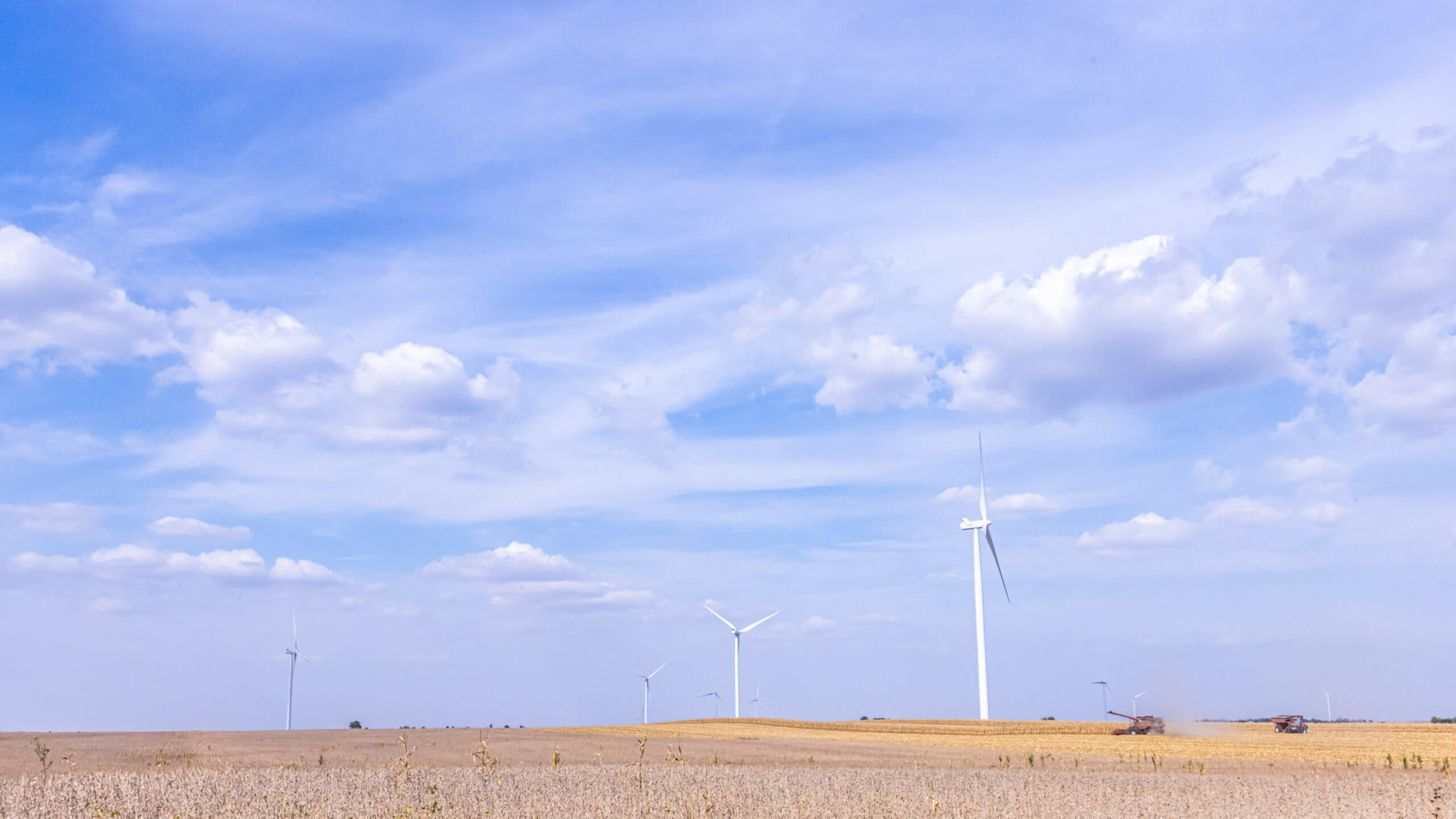Apex Clean Energy Recognized for “Best, Largest Pipeline” of Wind Projects in the U.S.
This article originally appeared in Recharge. Apex Clean Energy is on track to finance 7.5GW of renewables between 2017 and 2020 to take advantage of the fading tax credits, its…
This article originally appeared in Recharge.
Apex Clean Energy is on track to finance 7.5GW of renewables between 2017 and 2020 to take advantage of the fading tax credits, its chief executive tells Recharge, as the Virginia-based developer continues its blistering rise within the US renewables industry.
Apex will finance at least 1.5GW this year and “we’re looking to do at least 2GW a year in 2018, 2019 and 2020”, working through its 12GW wind-focused pipeline of projects, says president and CEO Mark Goodwin.
“We probably have the best and largest pipeline of projects in the United States,” he adds.
Like many developers, Virginia-based Apex is racing to secure off-take deals and build wind projects by the end of 2020 to maintain eligibility for the full production tax credit, currently worth an inflation-adjusted $24/MWh for 10 years.
But Goodwin believes the US wind market will remain healthy as the PTC steps down to nothing. “As it’s phased out, we think new opportunities will present themselves – and the financing gets easier [without the need for tax equity].”
However, wind PPA prices may rise modestly in the absence of the PTC, he says.
Apex is active in big wind markets like Texas and Oklahoma, but “we’re also trying to be early in states that haven’t built a lot lately”, Goodwin says.
“We have three really good projects in New York,” he says, “and a couple of projects in the mid-Atlantic region.”
Apex is also active in Ohio, although the wind market in that Midwestern state was dealt a setback recently when lawmakers failed to remove an overly restrictive zoning law for wind turbines.
In Elite Company
The rise of privately owned Apex within the US renewables market has been rapid. The company was founded in 2009 “from a dead stop … at the bottom of the financial crisis”, Goodwin says.
But it was able to raise capital from angel investors and family offices, and the timing of its launch ultimately proved propitious, allowing Apex to pursue a “roll-up strategy” of accumulating projects from “mom and pop” developers.
Over the past half-decade has Apex steadily built up its capabilities and stature within the renewables industry – moving from project acquisition to power marketing and financing, on to large-scale construction and, most recently, asset management.
Today the company has 220 employees and is seemingly ubiquitous in the US wind market.
In 2015 Apex brought more than 1GW of wind capacity into operation in a single calendar year – a feat that only a tiny handful of developers can lay claim to in the US, and all of those others have “multi-tens of billions of dollar balance sheets” to work with, notes Goodwin.
Last year Apex was the seventh leading wind developer in the US, behind giants like NextEra Energy Resources and Invenergy, but ahead of perennial powerhouses like Enel.
Apex – a “turnkey energy company”, as Goodwin puts it – typically sells its finished projects to big operators like Southern Power and Canada’s Enbridge. However, its asset-management business has ballooned to encompass a portfolio of nearly 2GW, with a roster of clients including corporate behemoths like Ikea.
Apex would either sell the project outright, or sell a majority stake so it could retain a minority stake. Reisky says he prefers to do the latter approach, particularly if Apex is retained to manage the scheme during its operational phase. It now manages over 1GW of operational wind projects, and employs 25 people in its operations centre. He adds that the firm may also consider working with a development partner to build a project and selling it when it becomes operational, but that this is not the plan now.
Its regular partners include utility Southern Power, to which it has sold three projects including the 147MW Grant Plains in Oklahoma in August; Ikea, which purchased a 165MW scheme in Texas in 2014; and tax equity investors including MidAmerican Energy. In total, Reisky estimates that Apex has done $1bn of tax equity deals.
Fort Hood deal ‘replicable’
One unusual opportunity Apex is focused on in the near term is the US Armed Forces.
This spring Apex completed a groundbreaking 65MW hybrid wind/solar project for the US Army’s Fort Hood base in Texas. It’s the largest renewables project ever backed by the US military, which itself is the country’s largest electricity consumer.
While the projects are relatively small by the standards of those Apex typically builds, the Fort Hood deal – which includes an off-site 50MW wind farm and an on-site 15MW PV array – has the potential to unlock a lot more business, both within the military and the corporate world, Goodwin says.
“We stayed in despite the complexities and the security requirements and the time it took to figure out how to arrange a financeable PPA with the Army,” he says. “It took us over a year … but now we’ve done the hard work and created a template.”
Apex’s wind and solar projects will supply about half of Fort Hood’s electricity needs; Apex will then procure the remainder of the base’s requirements within Texas’ competitive power market and sell the bundled package to the Army.
In effect, Apex has become the lone supplier of power to Fort Hood, the world’s largest military base by size. The deal is expected to save the Army more than $100m in electricity costs over its lifetime.
“It’s a great model for us to go out to the Navy and Air Force and replicate it,” Goodwin says.
And Apex believes such comprehensive packages of renewables and backup power will gain traction with new customers in the corporate renewables market, he says.
